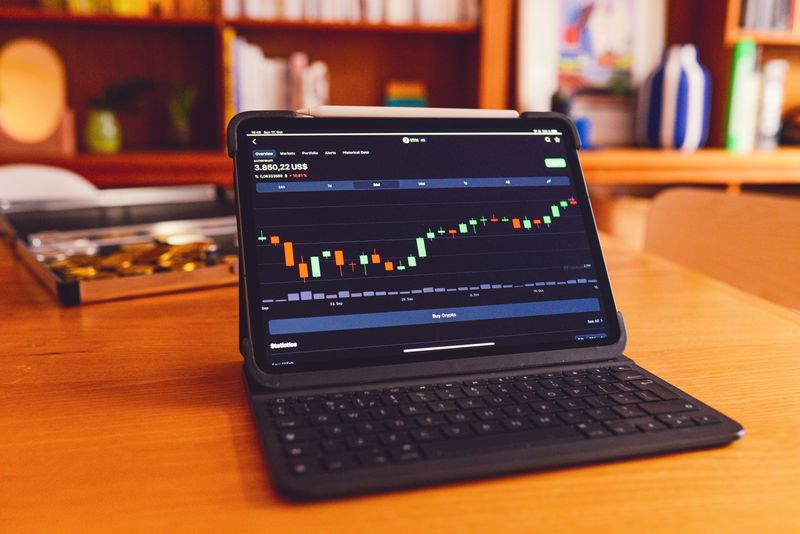Arbitrage is practiced in pretty much every market—from stocks and crypto arbitrage to retail and services. Essentially, it’s the “buy low”, “sell high” concept but done by taking advantage of price discrepancies on two different markets. Put simply: say, you buy a shoe on Ebay at $40, but then sell it on Amazon for $60. Pocket the $20 and you’ve successfully performed a small-scale retail arbitrage.
Now, arbitrage can feel like free money—at least when it works. But, before you go in pursuit of "free money," you need to understand exactly what crypto arbitrage entails, what the challenges and risks are (yup, there are risks), and how we at Hedgehog can help you hedge against the risks and simultaneously profit from it.
What is arbitrage?
Going by the “formal” definition, arbitrage is the practice of buying an asset in one market and then selling the same (or a similar) asset in another market to profit from the usually minute difference in its price in both markets.
What's crypto arbitrage?
Cryptocurrency arbitrage, as the name implies, is arbitrage involving cryptocurrency assets. Identical or correlated cryptocurrency assets may sometimes vary in price in different markets, creating opportunities for traders to capitalize on the difference. Be careful though — the price might change by the time you try to sell it, so you've got to be fast.
Crypto arbitrage opportunities arise as a result of the inevitable inefficiencies in markets and—as odd as it may sound—is an important tool in correcting these inefficiencies. The very act of exploiting these price differences eliminates these inefficiencies. Let’s break down what that means.
Say, for example, Bitcoin is trading at $19,900 on OKX and at $20,000 on Binance. One might buy a Bitcoin on OKX, send it to Binance, then sell it, pocketing the $100 difference. Now, the act of buying slightly increases the price of Bitcoin on OKX, likewise, selling on Binance decreases its price there a little. Do this enough times, and eventually, the prices on both exchanges converge, erasing the price difference and, sadly, any chances you had of making more free money.
Types of Crypto Arbitrage
Crypto arbitrage takes many forms — too many to be covered in this article, so let’s take a look at few popular ones.
1. Spot Arbitrage
The simplest and perhaps most popular form of crypto arbitrage is spot arbitrage. It basically means buying a cryptocurrency on one exchange and then selling it on another where its price is higher, pocketing the difference as profit. As with most other forms of arbitrage, you need significant trading volume to beat transaction costs, as the price difference is usually very small.
2. Positional Arbitrage
Positional arbitrage allows an arbitrageur (fancy word for arbitrage trader) to exploit the price difference of a cryptocurrency between two exchanges without needing to transfer any crypto across them. This helps them avoid the added risk, hassle, and cost that come with transferring cryptocurrency between exchanges—especially useful for slower, lazier folks.
In positional arbitrage, opposite positions are taken in the same asset on the two exchanges, and when prices on both exchanges finally match up, the trader takes a loss and simultaneously makes a profit that, hopefully, outweighs the loss—it's usually a close call!
3. Triangular arbitrage
Triangular arbitrage takes advantage of pricing inefficiencies in the exchange rates of cryptocurrencies on the same exchange. It typically involves three cryptocurrencies that can be easily traded for each other.
4. Interest rate arbitrage
Interest rate arbitrage exploits the difference in borrowing and lending rates on different exchanges—traders borrow at a lower rate than they lend at on another exchange. For instance, you might borrow Bitcoin at an interest rate of 0.2% on Binance and lend it at 0.8% on OKX, earning the spread between the two interest rates.
As an arbitrage trader, you face several challenges that can jeopardize your profits or even run you into a loss. Here are some reasons why arbitrage is easier said than done:
Risks of using arbitrage strategies
1. Price change risk
The biggest challenge faced by arbitrageurs is the risk of prices correcting before they can get out of a trade. So, you have to perform transactions as quickly as possible to minimize the risk of this happening—often meaning you have to set up expensive and complex automated trading systems.
2. High trading fees
Trading fees are the bane of any arbitrageur, as they can eat significantly into their profits or make an otherwise profitable arbitrage trade unprofitable. They usually trade very large volumes to minimize fees, but, of course, this requires having a lot of funds at hand.
3. High fees on deposits and withdrawals
As arbitrage trades often involve moving assets around between various platforms, fees on depositing and withdrawing assets on these platforms can eat into your profits or even render them unprofitable.
4. Lack of liquidity
You need to trade very high volumes to minimize fees and make a worthwhile profit, as the price differences they exploit tend to be very small. If an arbitrage opportunity arises but you’re unable to secure enough liquidity to enter, or worse, exit an arbitrage trade, you could miss out on potential profits or even suffer heavy losses.
5. Inadequate computing power or technical know-how
Arbitrage opportunities are hard to find in today's market, thanks to advanced computerized systems designed to correct any inefficiencies in the pricing of assets. And when they do arise, trading firms with lots of computing power at their disposal and teams of highly-trained engineers whose job is to program super-fast bots are usually the first to get to them. If you’re trading as a lone wolf or in a small team, you’re often left to fight for scraps, especially if you do not have the computing power or technical knowledge required to find and exploit these opportunities.
6. Platform limitations
Different centralized and decentralized exchanges and platforms that arbitrageurs use to carry out their trades might have limitations that can affect the success of an arbitrage trade. With the advanced software that professional arbitrageurs use, it's difficult to profit from manual arbitrage trades. That’s why trading bots are on the rise!
A platform whose services are required for an arbitrage trade might not have an Application Programming Interface, or API, typically needed to programmatically carry out trades on trading platforms, making it almost impossible to program bots that can trade on such a platform. Additionally, a platform might process transactions too slowly or place limitations on automated trading that are too strict to allow an arbitrageur to capitalize on an opportunity.
Hedgehog to the rescue!
Feeling a bit in despair after reading all that? Well, don't, because Hedgehog is here to help! While you can't completely eliminate risk from an arbitrage trade—believe me, we've tried—you can greatly minimize it and increase profitability with Hedgehog.
We're a robo-advisor and portfolio manager for cryptocurrencies that can help you find and exploit arbitrage opportunities in the markets.
Here are some features of Hedgehog that might be particularly useful to an arbitrageur:
Best price trading
Our "Best price trading" feature lets you buy at lower prices than on any exchange when you trade on Hedgehog. Seriously. If we're unable to offer you a lower price than on any exchange, we'll at least match the price on the cheapest exchange, so you're always getting the best available price with Hedgehog.
We achieve this by taking advantage of low-liquidity paths. In simple English, this just means our system analyzes every available market to find the cheapest possible way to buy your desired asset. This could often mean trading different assets across multiple exchanges—but don't worry, we take care of all the messy stuff behind the scenes.
Trading across several exchanges
Remember we said that arbitrage usually involves trading across multiple exchanges? Yeah, well Hedgehog does that, really well in fact. Through Hedgehog, you can trade on over 170 cryptocurrency exchanges—Coinbase, Kraken, OKX, and pretty much all the ones you've heard of. Besides helping you to spot arbitrage opportunities quicker, using Hedgehog also greatly reduces the risk and hassle involved with trading across multiple exchanges, essentially tilting the cards in your favor.
This feature also alleviates the liquidity and platform limitation problems that pose great threats to arbitrage. Being able to trade on various exchanges from a single platform means you can quickly view relevant data and determine whether or not you're likely to be able to access enough liquidity to complete an arbitrage trade.
Hedgehog has all the exchanges you'll likely need to trade on integrated into its platform (170 and counting), and so can be used to automate trades on them, getting you past their limitations.
Trading advice
Hedgehog is the first robo-advisor to get SEC approval to give personalized advice in the United States. Our robo-advisor could help you identify arbitrage opportunities in the cryptocurrency markets and advise you on how to take advantage of them. Cool, right?
To arbitrage or not to arbitrage
Arbitrage is a rather lucrative way of profiting from the wild, wild cryptocurrency markets if you’re fast. However, manual arbitrage is extremely time-consuming, and let’s not get started about the competition!
Fortunately, Hedgehog is here to make your arbitrage journey a little less daunting. Sign up with Hedgehog today and let us help you arbitrage!
If you enjoyed this piece, the credit goes to Yusuf! He is a professional writer at Spiritwish.co. He's also a programmer who loves to build stuff and write about it. A long-time cryptocurrency enthusiast, he’s usually tinkering with one protocol or the other, or coding up something fun.






